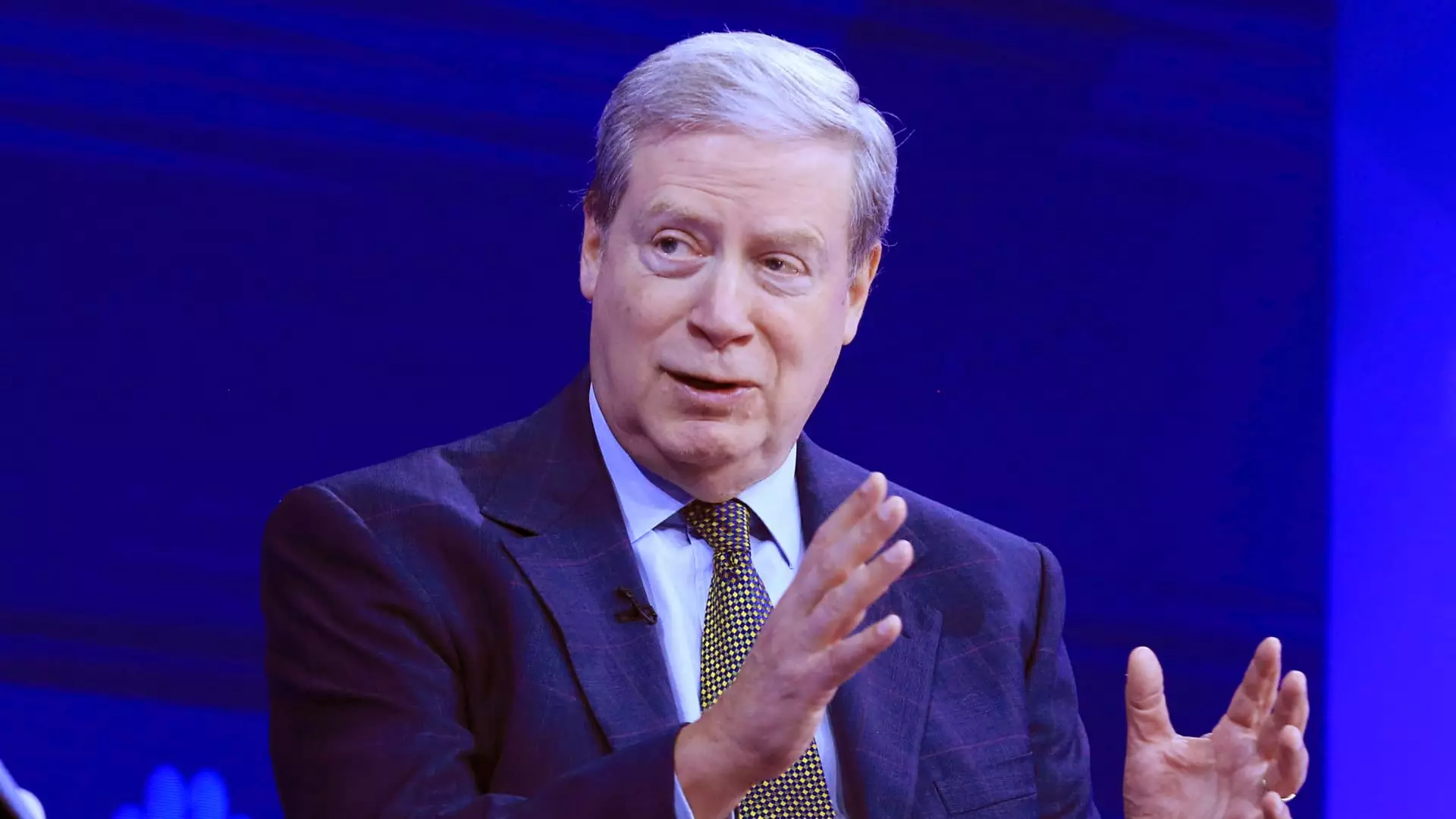Billionaire investor Stanley Druckenmiller, a veteran of the financial markets, recently articulated his views on the current economic climate following Donald Trump’s re-election. His extensive experience—spanning nearly half a century—grants weight to his assertions about the sentiment shift in the business community. Druckenmiller posits that we are witnessing a remarkable transition from a highly regulatory, anti-business environment to one that fosters optimism and encourages speculative investment. He noted on CNBC that there is a palpable change in CEO attitudes; many exhibit signs of relief and excitement, attributing this to favorable policy shifts anticipated under Trump’s administration.
This newfound enthusiasm is not merely anecdotal. It reflects a broader trend in the market, with indices like the S&P 500 experiencing significant gains amidst this political backdrop. A notable 6% surge post-election underlines the market’s positive response to Trump’s proposed tax cuts and deregulation policies. However, it’s essential to consider whether this enthusiasm is sustainable or merely a reactionary spike spurred by optimism regarding regulatory changes.
While Druckenmiller acknowledges the optimistic environment, he possesses a cautious stance regarding the stock market, especially in response to rising bond yields. His decision to maintain a short position against U.S. Treasurys underscores his belief that elevated bond yields pose a significant counterpoint to an otherwise robust economic outlook. The duality of a strengthening economy alongside rising yields creates a complex narrative that confounds investment strategies.
Druckenmiller’s perspective mirrors a broader concern within the investment community that the interplay of economic strength and rising bond yields could create turbulence. His articulated uncertainty about market directions is a prudent reminder that bullish sentiment can be retrained or reversed by macroeconomic factors, including inflation and interest rates. Holding a short position reflects a tactical approach, where he prioritizes prudence even when market indicators suggest a positive trend.
As the market landscape evolves, Druckenmiller emphasizes a targeted investment strategy that focuses on individual stocks, particularly those poised to benefit from advancements in artificial intelligence. He highlights that companies leveraging AI for cost reduction and productivity enhancements represent promising opportunities for investors. However, he refrains from detailing specific stocks, suggesting a strategy focused on careful analysis and discretion.
This focus on AI underscores a significant theme in modern investing: technological innovation as a driving force for future growth. Investors increasingly recognize that industries embracing technology are more likely to thrive, propelling markets upward. Druckenmiller’s past decisions to exit positions in major tech firms like Nvidia and Microsoft may signal a strategic pivot, allowing him to reassess opportunities without being tied to legacy investments.
The Debt Dilemma: Tariffs as a Fiscal Strategy
In addressing the potential negative implications of Trump’s trade policies, specifically the introduction of tariffs, Druckenmiller views these measures through a fiscal lens. He contends that tariffs could contribute to alleviating the nation’s fiscal challenges, framing them as a means for generating revenue without directly imposing additional burdens on domestic consumers. This perspective invites a reevaluation of tariffs from a short-term inconvenience to a potentially valuable source of funding.
That said, the specter of retaliation looms large in discussions of international trade. While Druckenmiller acknowledges this risk, he maintains that as long as tariffs remain within a manageable range, the potential benefits may outweigh the concerns. His views challenge us to think critically about trade dynamics and the broader implications of fiscal policy, particularly in an increasingly interconnected global economy.
Stanley Druckenmiller presents a nuanced view of the market landscape associated with Donald Trump’s re-election. His insights reflect a blend of hope and caution—a recognition of renewed business optimism alongside the potential complexities posed by rising bond yields and international trade measures. In an era characterized by rapid technological evolution and shifting political winds, Druckenmiller’s thoughts serve as a foundation for understanding investor sentiment and economic forecasts. His focus on individual stocks, particularly within the technological sector, combined with a strategic approach to fiscal policy, emphasizes the importance of adaptability in investment strategies as markets navigate this complex terrain.

